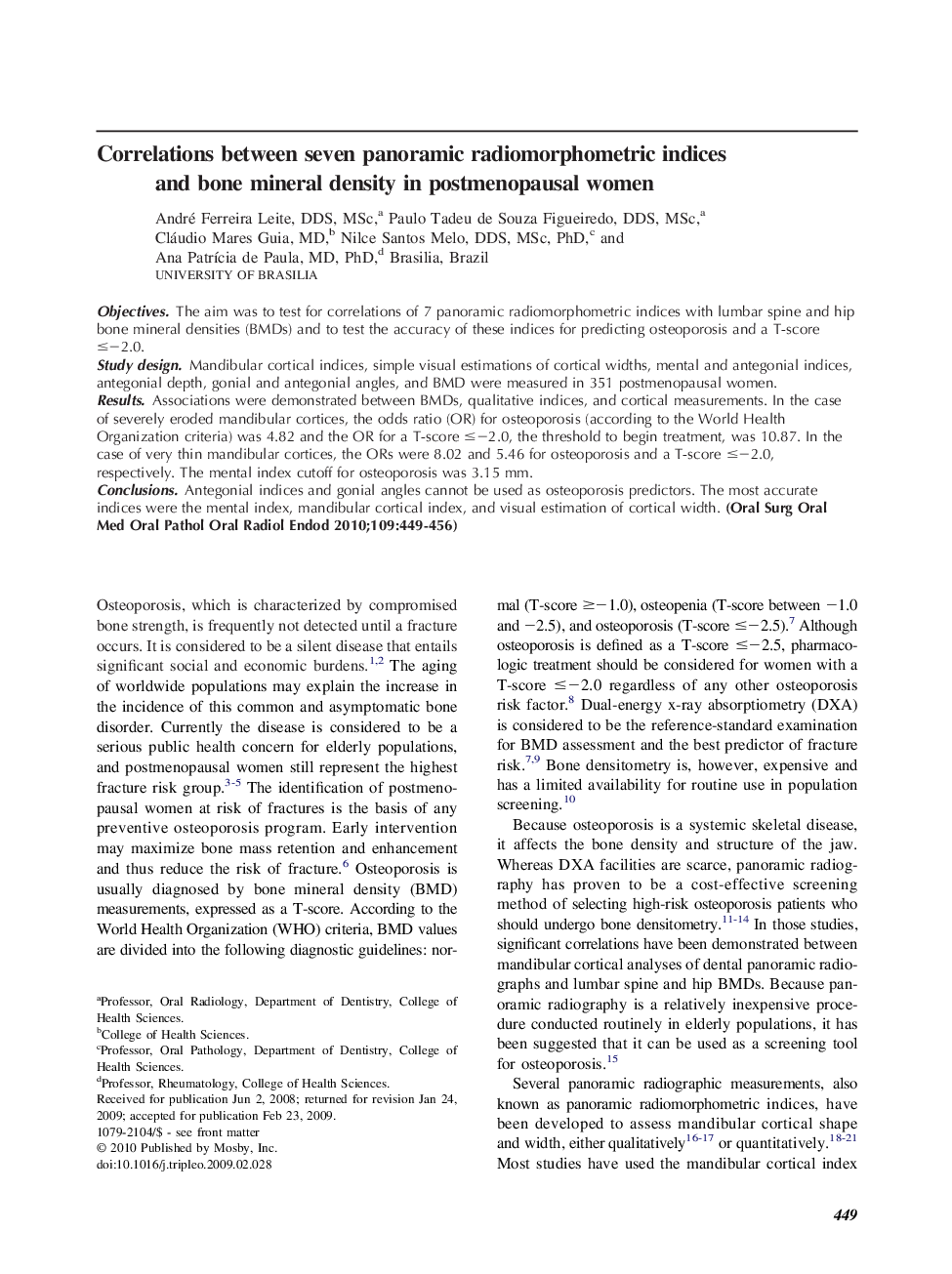| Article ID | Journal | Published Year | Pages | File Type |
|---|---|---|---|---|
| 3167696 | Oral Surgery, Oral Medicine, Oral Pathology, Oral Radiology, and Endodontology | 2010 | 8 Pages |
ObjectivesThe aim was to test for correlations of 7 panoramic radiomorphometric indices with lumbar spine and hip bone mineral densities (BMDs) and to test the accuracy of these indices for predicting osteoporosis and a T-score ≤−2.0.Study designMandibular cortical indices, simple visual estimations of cortical widths, mental and antegonial indices, antegonial depth, gonial and antegonial angles, and BMD were measured in 351 postmenopausal women.ResultsAssociations were demonstrated between BMDs, qualitative indices, and cortical measurements. In the case of severely eroded mandibular cortices, the odds ratio (OR) for osteoporosis (according to the World Health Organization criteria) was 4.82 and the OR for a T-score ≤−2.0, the threshold to begin treatment, was 10.87. In the case of very thin mandibular cortices, the ORs were 8.02 and 5.46 for osteoporosis and a T-score ≤−2.0, respectively. The mental index cutoff for osteoporosis was 3.15 mm.ConclusionsAntegonial indices and gonial angles cannot be used as osteoporosis predictors. The most accurate indices were the mental index, mandibular cortical index, and visual estimation of cortical width.
